More has been written about World War II than probably any other conflict in human history. Yet, whether you are a World War II scholar or someone for whom the conflict is little more than a notation in history books, there is always something new to learn about this massive and world-changing confrontation. From the memoirs of Holocaust survivors to the cockpits of fighter planes above the Pacific, these 20 books will show you new aspects of the Second World War, some of them brutal, and some inspiring, but all of them gripping.
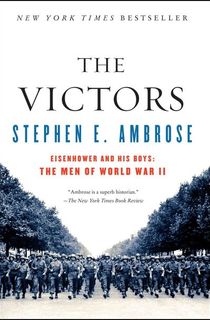
The Victors
From the New York Times bestselling author of Band of Brothers comes this “riveting” (Atlanta Journal-Constitution) book from a “superb historian” (New York Times Book Review) that chronicles the war in Europe from D-Day to Germany’s surrender in 1945. From the experiences of individual soldiers to the big picture of the European theater, see why historian James McPherson raved that, “If there is a better book about the experience of GIs who fought in Europe during World War II, I have not read it.”
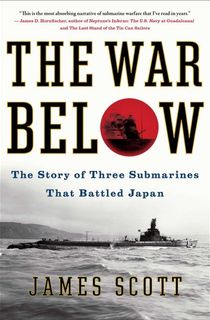
The War Below
During World War II, one of the most dangerous places you could be was under the water. The casualty rate among submarine crew was higher than any other branch of the military, with almost one in every five submarines destroyed. Drawn from more than 100 interviews with submarine veterans as well as previously unpublished letters and diaries, this “gripping” (Kirkus Reviews) book from Pulitzer Prize finalist James Scott paints a vivid portrait of what life was like for the brave men aboard these deadly vessels.

The Story of World War II
In 1945, with the war freshly over, Henry Steele Commager published an ambitious book that aimed to be a definitive guide to the conflict. Years later, historian and host of PBS’s A Biography of America Donald L. Miller revised, rewrote, and expanded Commager’s original text to create a more complete picture, one filled in by data that simply wasn’t available in 1945. While a complete history of the war may be more than one book can manage, “the extensive, moving testimonies by veterans of their brushes with death and terror humanize and vivify” this exhaustive and fascinating volume (Publishers Weekly).
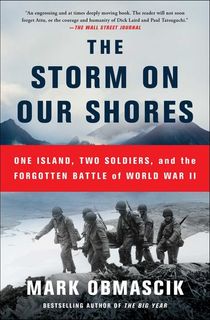
The Storm on Our Shores
“A poignant chronicle” (Kirkus Reviews), this true story of a soldier’s lost diary and the man who returned it to his family years later is transformed by Pulitzer Prize-winning journalist Mark Obmascik into “a moving, intimate tale of two men, two families, and two countries” (Publishers Weekly) torn apart and brought together by war and peace. Conflicted about the war, Paul Nobuo Tatsuguchi was devoted to his homeland and willing to fight for it. Along the way, he kept a diary that would eventually fall into the hands of an American soldier named Dick Laird. This one-of-a-kind book tells the story of the war from both sides, “perhaps the only way warfare can truly be understood” (Helen Thorpe, author of Soldier Girls).
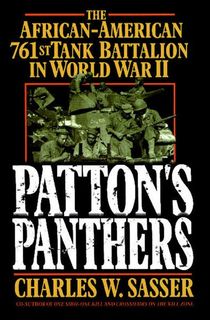
Patton's Panthers
In April of 1942, the first all-Black tank battalion in the United States Army was activated at Camp Claiborne, Louisiana. Known as the Black Panthers, the members of the 761st Tank Battalion would go on to serve under General George S. Patton in some of the war’s most important conflicts, including the Battle of the Bulge. The Panthers defeated more than 6,000 German soldiers, captured 30 towns, and helped to liberate concentration camps. While Charles W. Sasser’s “convincing” portrait is “not the first study of the 761st, this highly readable book is one of the best” (Booklist).

My Name Is Selma
“There are many extraordinary books written by survivors of the Holocaust, and this numbers among them,” raves Library Journal about this international bestseller, which chronicles the author’s life as a member of the underground Resistance against the Nazi occupation of the Netherlands. The result is “a Holocaust story of incredible luck, breathtaking bravery and incalculable loss” (The Forward) written by the person who experienced it firsthand, living under an assumed identity and doing what “had to be done” until she was eventually captured and placed in the Ravensbruck concentration camp.

Human Smoke
Celebrated novelist Nicholson Baker turns his hand to nonfiction in this “riveting and fascinating” (New York Times Book Review) book which uses a variety of firsthand sources, including newspaper and magazine articles, speeches, and diaries, to paint an alternative portrait of the days leading up to World War II and the grim march toward the Holocaust. The result is a book that has already become highly controversial, as it “movingly pierces the lies, hopes, fears, and myths we so easily imbibe on the road to war” (Gar Alperovitz, author of The Decision to Use the Atomic Bomb).

Four Hours of Fury
On March 24, 1945, some 2,000 Allied aircraft dropped more than 17,000 soldiers on the far side of the Rhine River, deep into Nazi territory. Despite the scope and scale of the invasion, however, Operation Varsity is not nearly as well-known as many of the other operations undertaken during World War II. In this “inspired” (Wall Street Journal) account, former paratrooper James M. Fenelon seeks to rectify that in “a riveting account of an airborne division at war” (Army Times) and four hours that helped to bring an end to the Second World War.
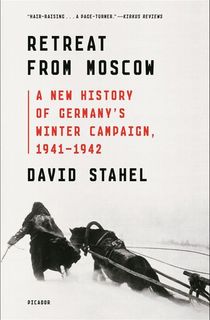
Retreat from Moscow
A Senior Lecturer in History at the University of New South Wales, David Stahel’s revisionist look at Germany’s winter campaign of 1941 and 1942—often regarded as the Nazis’ first defeat—is “an engaging, fine-grained account” that takes “a fresh look at a crucial series of battles about which we wrongly thought we already knew everything there was to know” (Wall Street Journal). From the Wolf’s Lair itself to the soldiers on the ground, facing frostbite as deadly as any artillery, this “compelling account of an oft-misunderstood period of the Second World War” (Military History Matters) argues for a different understanding of the German campaign and how it ended.
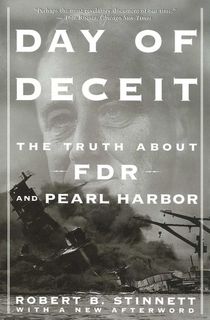
Day of Deceit
We all know what happened at Pearl Harbor on December 7, 1941, right? According to this “exceptionally well-presented” (Wall Street Journal) book by a former member of the United States Navy who earned 10 battle stars and a Presidential Unit Citation, maybe not. “It is difficult, after reading this copiously documented book, not to wonder about previously unchallenged assumptions about Pearl Harbor,” wrote Richard Bernstein in The New York Times. Drawing on more than two decades of research, Stinnett argues that what happened at Pearl Harbor was neither a military coup by Japan nor a failure of American intelligence, but something more sinister than either.

D-Days in the Pacific
Though it has gone down in history like no other, the invasion of Normandy on June 6, 1944, was not even the largest invasion force of the war. In fact, there were numerous D-Days throughout World War II’s Pacific theater, including the invasion of Okinawa on April 1, 1945, which involved an invasion fleet larger than the one assembled for Normandy. In this far-ranging book, a “distinguished historian” (Publishers Weekly) recounts the many battles of the Pacific theater, from the bloody and close-quarters fighting that followed amphibious assaults to the dropping of the atomic bombs on Hiroshima and Nagasaki.

To Hell and Back
Today, we know Audie Murphy as the star of such films as Red Badge of Courage, The Quiet American, and Ride a Crooked Trail. In 1949, however, he was simply the most decorated American combat soldier who fought in World War II. A kid who wasn’t yet 21 on V-E Day, Murphy was nonetheless credited with having captured, killed, or wounded some 240 enemy soldiers. His 1949 memoir sat astride the bestseller list for 14 weeks and has since become a classic, adapted into a 1955 movie starring Murphy as himself.

Climb to Conquer
The first of its kind, the 10th Mountain Division of the United States Army depended on skiers and rock climbers to traverse some of the most treacherous conditions on the planet. Survivors of the unit’s exploits during World War II include the Sierra Club’s David Brower, Friedl Pfeifer of the Aspen Skiing Corporation, and Nike cofounder Bill Bowerman. Now, drawing on years of interviews and research, Peter Sheldon—himself a contributing editor and columnist for Ski magazine—tells the unique and unforgettable story of this one-of-a-kind unit, from their unorthodox boot camp to scaling an “unclimbable” cliff face in the Italian Apennines to get the drop on German soldiers.

A Bridge Too Far
Adapted into the star-studded 1977 film of the same name, Cornelius Ryan’s book tells the gripping story of Operation Market Garden, an ultimately doomed attempt by Allied troops to take the German-occupied Netherlands. By dropping troops into the city of Arnhem, they hoped to capture several strategic bridges across the Rhine. However, the massive operation ultimately cost the Allied forces nearly twice as many casualties as D-Day. From the decision-makers at the top to the soldiers who fought and died and the Dutch civilians who were caught in the crossfire, this ambitious book tells the unforgettable true story of one of the bloodiest battles of the war.

Nazi Wives
With the recent release of Jonathan Glazer’s The Zone of Interest, the daily lives of the Nazis who perpetrated the horrors of the Holocaust is in new focus, which makes it a perfect time to pick up James Wyllie’s “chilling and richly detailed” book (Publishers Weekly). Examining the Third Reich through the lens of the women who were married to its leaders, Nazi Wives explores the personal lives and motivations of the women in Hitler’s inner circle in a deep dive that is “exhaustive and studded with fascinating detail” (The Tablet).
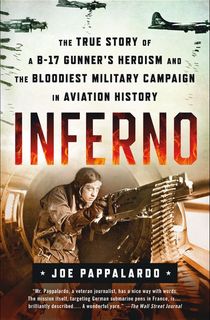
Inferno
In the air above the French city of Saint-Nazaire—nicknamed “flak city” by Allied airmen because the U-boat pens below were protected by heavy antiaircraft gun—Staff Sergeant Maynard Harrison Smith became one of the most unlikely heroes of World War II. He singlehandedly saved six crewmen of his B-17 Flying Fortress bomber as it was riddled with more than 3,500 bullets and pieces of shrapnel before limping into an English airfield, where the craft immediately broke in two. He was awarded the Medal of Honor for his actions. In this “wonderful yarn” (Wall Street Journal) by veteran journalist Joe Pappalardo, Harrison’s story becomes the story of the many airmen who served in World War II, often suffering a casualty rate of nearly 40 or 50 percent.

A Bookshop in Berlin
A Jewish woman originally from Poland, Francoise Frenkel fulfilled a lifelong dream in 1921, opening Berlin’s first French bookshop. Unfortunately, that dream was to be short lived, as Nazi ideology was poisoning the nation, eventually driving Frenkel from Germany and into France as she fled Kristallnacht and the persecution of Hitler’s regime. Named a People magazine Book of the Week, this “exceptional” (Wall Street Journal) book was quietly published in 1945 and only rediscovered years later, whereupon it became “a haunting tribute to survivors and those lost forever – and a reminder in our own troubled era, never to forget” (People).
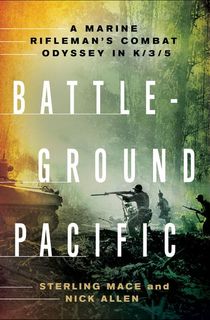
Battleground Pacific
The Pacific theater saw some of the bloodiest and most brutal fighting of the war, and the men of K Company, 3rd Battalion, 5th Marines—or K-3-5—saw some of the worst of it. In this “engrossing account of the vicious combat encountered by U.S. Marines in the Pacific theater of World War II” (Kirkus Reviews), Sterling Mace, one of the men who was there, tells his own unforgettable story, with the help of Nick Allen, the son of a combat rifleman who has spent much of his life interviewing combat veterans. Read it to see why the New York Post says, “You see the word ‘hero’ tossed around a lot these days, but Mace and his comrades were the real deal.”
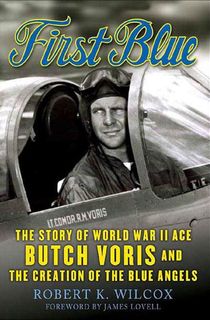
First Blue
Today, millions of people see the Blue Angels, the most famous flight demonstration team in the world, perform every year. Yet most have never heard of the man who founded the Blue Angels, a World War II flying ace named Butch Voris, who flew fighters above some of the fiercest combat in the Pacific theater. Now, Robert K. Wilcox, a “master of aviation history” (Booklist) has set out to remedy that, introducing readers to a unique and exciting figure in aviation history whose contributions after the war, when he worked on the development of the F-14 Tomcat and the lunar lander, may even outshine those of his ace combat record.
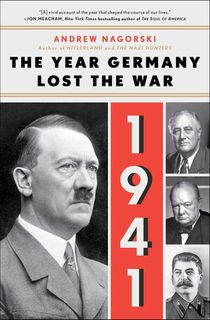
1941: The Year Germany Lost the War
In early 1941, it looked like total victory was within Hitler’s grasp. Nazis controlled much of Europe, and England was withering beneath the bombing of the Blitz. In this “entertaining” (Wall Street Journal) book, bestselling historian Andrew Nagorski “brings keen psychological insights into the world leaders involved” (Booklist) in this fateful year which saw the United States and the Soviet Union joining the war effort against Germany, ultimately setting into motion the end of the war and the defeat of Hitler’s Germany.
This post is sponsored by Open Road Media. Thank you for supporting our partners, who make it possible for The Archive to continue publishing the history stories you love.
